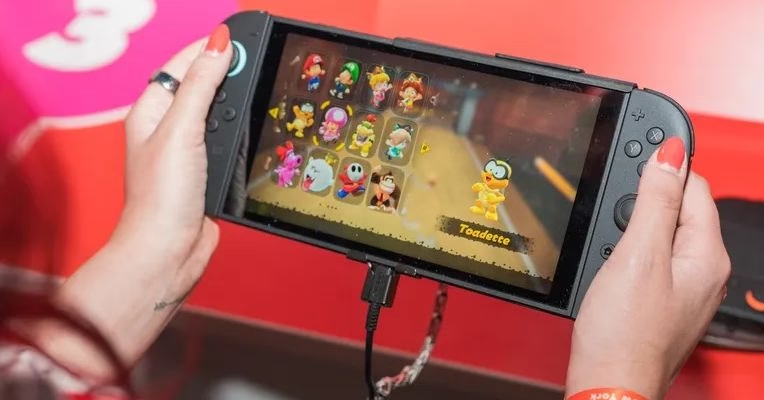Nintendo Switch 2 Review: Familiar Feel, Smarter Features?
Table of Contents
Introduction
Nintendo’s long-awaited successor to the immensely popular Switch console is finally here—and while it might be called the Switch 2, its naming and development journey were far from straightforward. At first glance, the sequel may not appear as groundbreaking as the original hybrid console. However, a closer inspection reveals a refined evolution, blending innovation with familiarity to redefine what users can expect from the Switch experience.
In this post, we explore the behind-the-scenes decisions that shaped the Switch 2, highlight key hardware upgrades, and dive into the gaming experiences that signal a new standard in console design and functionality.

The Naming Challenge: Why Not Super Nintendo Switch?
Naming a next-generation console might sound simple—just add “Super,” “Pro,” or “Next,” right? Not so fast.
During a private media event in New York City, producer Kouichi Kawamoto, director Takuhiro Dohta, and technical director Tetsuya Sasaki explained the reasoning behind choosing the name “Switch 2.” One early contender was the Super Nintendo Switch, a nod to the iconic SNES era. However, that idea was eventually shelved. Why?
The team wanted to underscore a crucial distinction: compatibility. Unlike the NES and SNES, which had entirely separate game libraries, the Switch 2 was designed to support a seamless transition, building upon the existing Switch ecosystem. Kawamoto emphasized that the name had to reflect “the latest standard for what Nintendo Switch is”—not a nostalgic reboot, but a forward-looking iteration.
Switch 2: Design Evolution and Hardware Enhancements
From a hardware perspective, the Switch 2 introduces measured but meaningful changes. The console now features a larger 7.9-inch LCD screen, up from the original 6.2 inches. It’s a noticeable upgrade in visual real estate without compromising portability or comfort.
The new Joy-Con controllers are slightly longer to fit the wider frame and attach magnetically instead of sliding on and off. Despite the size increase, the Switch 2 still feels ergonomic and balanced, avoiding the bulkiness that often accompanies larger devices—a concern many users experience with modern smartphones.
These design refinements showcase Nintendo’s iterative approach: less about reinvention, more about perfecting the hybrid model that revolutionized gaming in 2017.
Joy-Con 2.0: Magnetic Precision and Mouse Mode Innovation
Perhaps the most significant innovation lies in the revamped Joy-Con controllers. In addition to magnetic attachments, the controllers introduce a new “mouse mode” feature—an unconventional yet surprisingly intuitive advancement.
By pressing a release button, the Joy-Cons detach with a satisfying click. Once removed, they can be used on a surface as makeshift mice, unlocking unique interaction modes for specific games. This feature bridges tactile control with analog versatility, further blurring the lines between console gaming and PC-style input.
Game Testing: Mario Kart World, Drag X Drive, and Metroid 4: Beyond
At the hands-on event, attendees tested several launch titles, including:
Mario Kart World – The flagship title for the Switch 2. Visually sharp, fast-paced, and delightfully familiar, it serves as a benchmark for how Nintendo has optimized performance while keeping the fun intact.
Drag X Drive – A wheelchair basketball title that creatively leverages the new mouse mode. Players use both Joy-Cons to mimic wheel motion, offering a kinetic and immersive experience. However, the physical exertion required can be surprisingly intense—perhaps even tiring for casual players.
Metroid 4: Beyond – A standout showcase for the Joy-Con’s precision. The mouse mode allowed players to stabilize aim in ways that traditional controllers couldn’t, providing a more accessible experience for users who struggle with traditional FPS mechanics.
Each title demonstrated the adaptability of the new hardware and how developers are using it to craft more inclusive and creative gameplay mechanics.
Developer Insights: Flexibility for Game Creators
According to director Takuhiro Dohta, the choice to implement or emphasize the mouse functionality lies entirely with developers. This flexibility ensures that game creators can decide what works best for their titles, whether that means a toggleable control mode or full-on mouse integration.
This openness to developer interpretation is a strategic move. It encourages creativity while ensuring the feature set doesn’t become a forced gimmick. Developers now have the tools to push boundaries without being constrained by rigid input methods—a trend worth watching in future game releases.
Why This Matters to Tech Enthusiasts and Innovators
Nintendo’s Switch 2 represents more than just a hardware refresh—it’s a case study in iterative innovation, user-centered design, and platform continuity. These principles are crucial for entrepreneurs, marketers, and tech leaders looking to create products that evolve without alienating their core audience.
If you’re exploring how to build seamless user experiences or create future-ready products, the lessons from Nintendo’s iterative strategy can be highly instructive. At Trenzest, we regularly explore how major tech brands strike a balance between innovation and familiarity.
Explore More on Trenzest
Want to stay updated on how industry leaders like Nintendo drive innovation while maintaining brand loyalty? Visit Trenzest.com for in-depth insights, strategy breakdowns, and technology trend analysis.
Recommended External Resources:
Let us know what you think of the new Switch 2 features and whether Nintendo hit the mark—or missed an opportunity. For more expert takes, follow Trenzest’s updates and subscribe to our newsletter.
